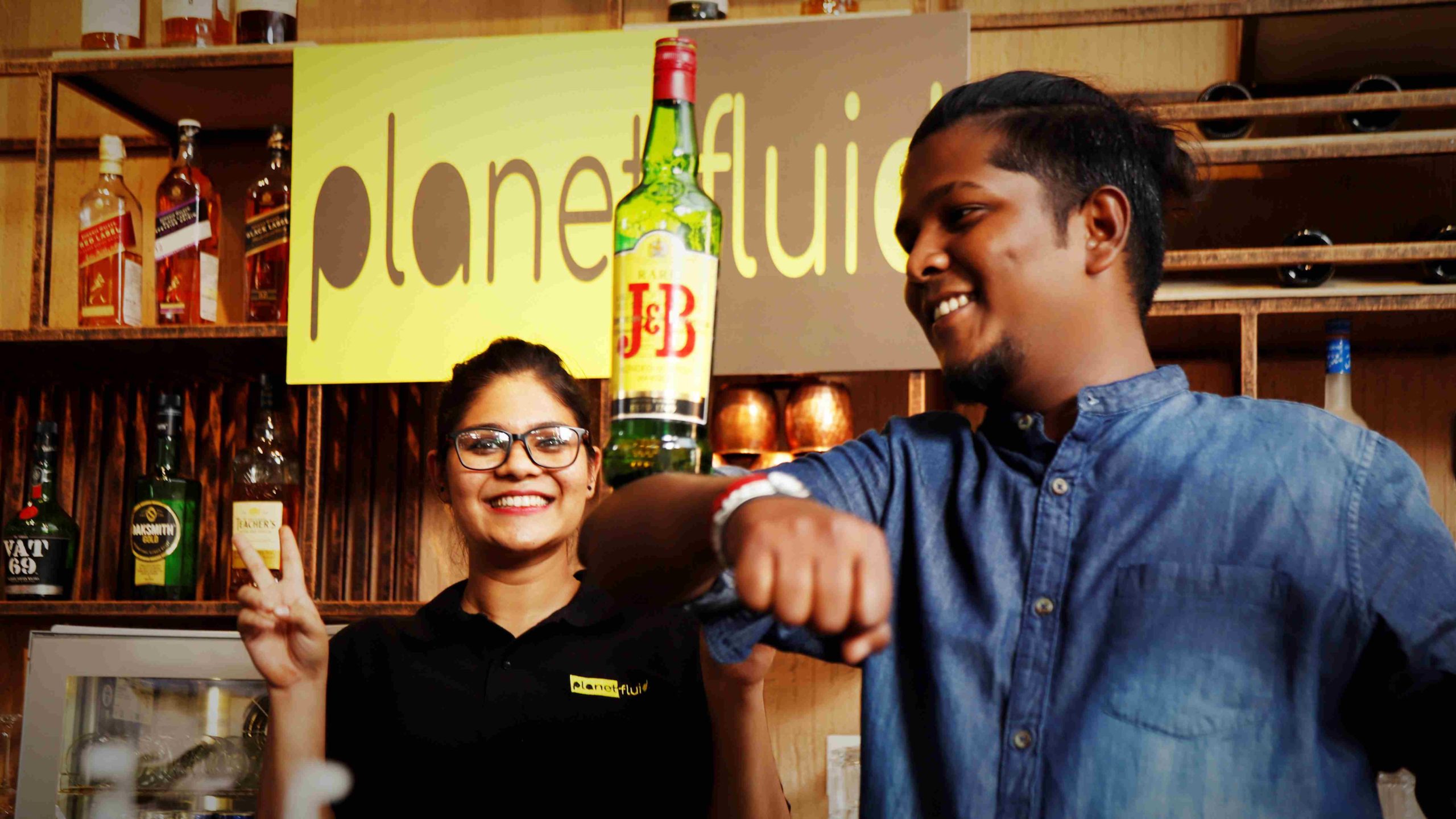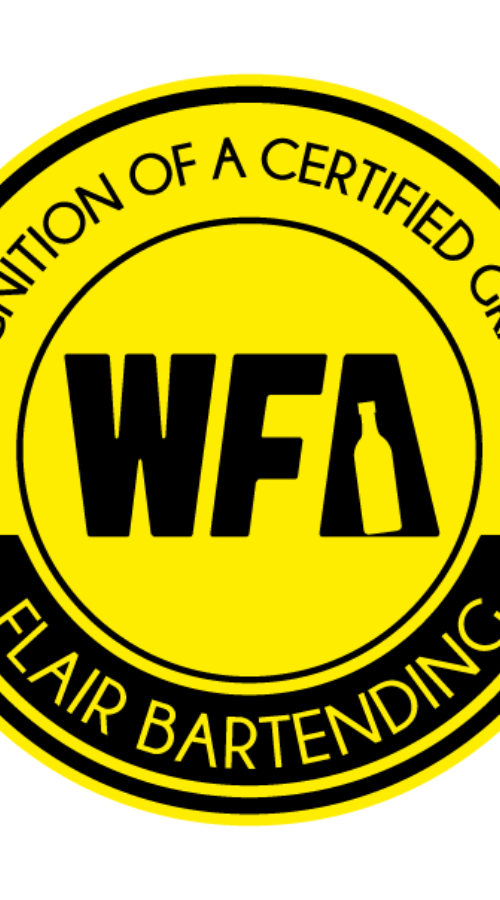Customer service and communication skills should be emphasized in a bartending training program because they are vital to a bartender’s job success. The following are some typical methods that bartending schools may employ to instruct these abilities:
-
Theory and Classroom Instruction: The institute may offer theoretical lectures on communication and customer service, including subjects like the value of excellent communication, active listening, body language, and dispute resolution. This can aid pupils in comprehending the guiding ideas and theories that underlie these abilities.
-
Role-playing and Simulations: Role-playing activities and simulations are frequently used in practical training. Students could be given several settings where they must communicate with consumers, deal with difficult circumstances, and hone their communication skills. This enables students to boost their self-assurance, learn how to react effectively, and hone their customer service skills.
-
Guest Speakers and Industry Professionals: Bartending training institute in Pune may bring in outside speakers, such as seasoned bartenders or business leaders, to provide their perspectives on communication and customer service. These speakers can give instances from the actual world, pointers, and helpful suggestions to help the students better understand these skills.
-
Student Interaction Possibilities: Some institutions may plan activities or develop chances for students to speak with actual clients. This can entail holding events where students can practice their bartending and customer service skills in a supervised setting or providing on-site training in a bar. Students can learn from first-hand experience and get performance evaluation through such opportunities.
-
Feedback and Evaluation: Throughout the training course, teachers may offer helpful criticism and ratings of the trainees’ communication and customer service abilities. Students are encouraged to improve their approach by this feedback, which also enables them to pinpoint areas for improvement. It might also incorporate role-playing exercises or assessments based on their encounters with clients.
-
Emphasis on Professionalism: The necessity of professionalism in customer service is frequently emphasized by bartending schools. Students are taught the value of having a good attitude, acting politely, paying attention, and showing customers respect. These elements help to create a warm and pleasurable environment for customers.
Keep in mind that many bartending schools may have their own distinctive teaching philosophies and curricula, thus the precise manner of imparting customer service and communication skills may vary. It’s a good idea to investigate the courses provided by several colleges to locate one that suits your particular educational objectives.
Theory and Classroom Instruction:-
A variety of themes connected to the craft of bartending are often covered in theory and classroom instruction throughout bartending training, including customer service and communication skills. The following significant topics may be discussed in theory and in class:
-
Customer Service Overview: Students are given an overview of the core ideas behind customer service and how crucial it is to the hospitality sector. They gain knowledge about rendering first-rate customer service, comprehending client requirements, and enhancing the guest experience.
-
Effective Communication Techniques: The training center focuses on imparting the skills necessary for bartenders to communicate with clients through effective communication techniques. This covers verbal communication, nonverbal clues, active listening, and clearly and competently delivering information.
-
Bar Etiquette: Students are taught about the appropriate conduct required of bartenders. This includes having good personal hygiene, dressing appropriately, keeping your office tidy and organized, and showing respect to your coworkers and customers.
-
Understanding Customer wants: In order to deliver individualized service, bartenders must comprehend and anticipate customer wants. Techniques for interpreting consumer indications, determining preferences, and customizing the service are covered in training. This might cover things like upselling, suggestive selling, and recommending appropriate beverages.
-
Handling Difficult Situations: Handling difficult situations is a crucial component of providing excellent customer service. Strategies for dealing client complaints, handling conflicts, and resolving issues with professionalism and sensitivity are taught to students.
-
Responsible Service: Serving alcohol responsibly is an essential part of the bartending profession. Students are taught at training facilities about the law, age verification methods, how to spot intoxication, and how to handle alcohol safely.
-
Cultural Diversity and Sensitivity: Bartenders frequently interact with patrons from various cultural backgrounds. Cultural sensitivity, respect for various beliefs and practices, and fostering an inclusive workplace for all customers are all topics covered in training.
-
Bar Workflow and Team Communication: Bartenders frequently operate in teams in a fast-paced atmosphere. To maintain seamless operations and high-quality service, students learn about effective teamwork, good communication within the team, and efficient bar workflow.
-
Menu Knowledge: It’s important to be aware of the options available at the bar and to be able to make suggestions. Students may learn about various beverage varieties, their components, flavour profiles, and suggested pairings throughout training.
-
Sales strategies: Bartenders are frequently in charge of creating sales. Techniques for suggestive selling, marketing specials or trademark beverages, and improving the overall customer experience may all be included in training in order to boost sales.
Bartending training programs seek to give students a good foundation of knowledge and abilities through theory and classroom instruction, preparing them for situations they may face in the real world while working in the sector. These courses frequently go along with practical instruction, enabling students to put the ideas they have learnt into practice.
Role-playing and Simulations:-
Role-playing and simulations are important parts of bartending training because they give students hands-on experience in a supervised setting. The standard way that role-playing and simulations are used into bartending instruction is as follows:
-
Customer Interaction Scenarios: Simulated customer interaction scenarios give students a chance to hone their communication and customer service skills. These scenarios could involve dealing with various consumer types, such as picky customers, first-time visitors, or those with particular preferences. Students learn how to deal with customers, take care of their requirements, and deliver outstanding service by acting out these encounters.
-
Conflict resolution under challenging circumstances: Students can practice handling difficult circumstances that might occur in a pub setting through role-playing. These may include dealing with situations like an irate customer, handling disputes among customers, or handling problems with excessive alcohol use. Students learn how to defuse conflict, discover solutions, and keep a composed and professional demeanour through role-playing.
-
Taking Customer Orders and Making Appropriate Beverage Recommendations: Students practice taking customer orders and making suitable beverage suggestions depending on their preferences. This enhances their capacity to offer acceptable suggestions, build their understanding of various beverage selections, and hone their upselling strategies. Role-playing enables students to improve their abilities in providing individualized recommendations because it allows for feedback and direction from instructors and peers.
-
Training for speed and efficiency: Working in a hurried setting is common when serving drinks. This environment can be replicated in simulations, giving students the chance to practice multitasking, prioritizing their orders, and working quickly behind the counter. Students learn how to handle pressure, manage their time effectively, and maintain accuracy while providing consumers with quick service by modelling realistic circumstances with time limitations.
-
Collaboration and Teamwork: Simulations may include group activities that motivate students to work as a team. As bartending frequently requires engaging with other staff members, such waiters, bussers, or kitchen personnel, this builds good communication, coordination, and teamwork skills. Students gain knowledge about how to express their requirements, assist their teammates, and maintain efficiency in a team setting through role-playing.
-
Evaluation and Feedback: During simulations and role-playing, teachers comment on and rate the students’ performance. Students can discover their areas for growth and hone their communication and customer service abilities with the assistance of this feedback. It enables users to recognize their assets and limitations, put good advice into practice, and improve their overall performance.
In Bartending School, role-playing and simulations offer students a secure environment in which to hone their abilities, make mistakes, and grow from them. Students build self-assurance, enhance their capacity to handle a variety of situations, and develop the abilities required to succeed in their bartending jobs by participating in realistic scenarios.
Customer Interaction Opportunities:-
Opportunities for customer engagement are important parts of bartending training because they give students actual experience and an opportunity to put their communication and customer service skills to use. The following are some typical ways that opportunities for client interaction are introduced into bartending training:
-
On-Site Training at Bars or Restaurants: Some bartender training programs collaborate with bars or eateries to give students real-world exposure. Under the guidance of instructors or seasoned bartenders, students may get the chance to serve genuine clients, take orders, make drinks, and converse with customers. Students can do this to get real-world experience and see how a live bar operates.
-
Mock Bar Events or Simulated Bar Service: Training facilities may host mock bar events or develop scenarios for simulated bar service. While their classmates or teachers play the role of clients, students serve as bartenders. Students can take orders, serve drinks and practice their communication and customer service skills in a safe setting. Students’ skills can be improved through feedback and direction from these simulations.
-
Guest Visits and Role-Playing: Training programs may ask visitors—friends, family members, or business professionals—to come to the training location and take on the roles of consumers. These visitors are engaged with by students, who also offer them refreshments and collect their orders. Students can practice their conversational skills, customer service strategies, and handling different customer circumstances through role-playing activities. Students receive feedback to help them achieve better.
-
Event Catering or Bartending Opportunities: A few bartending schools give their students the chance to work at catering functions or bars. These occasions might be anything from intimate gatherings to sizable gatherings. Students serve drinks, engage with customers, and work side by side with seasoned bartenders. Students are exposed to distinct consumer preferences, event dynamics, and the difficulties of bartending in various contexts through this practical experience.
-
Service initiatives or Community Events: Bartending training programs could plan service initiatives or community gatherings where students can put their knowledge to use while giving back to the neighborhood. Students might volunteer at neighborhood festivals, participate in charity fundraisers, or serve drinks at non-profit organizations to raise money for them. Through these activities, students can engage with a variety of clients while supporting worthwhile causes.
-
Feedback and Evaluation: Instructors give feedback and assess students’ performance during customer engagement opportunities. Feedback may be given depending on the level of professionalism, efficiency, and effective communication demonstrated by the pupils. Students’ overall performance is improved and their ability to identify areas for growth is helped by this feedback.
Opportunities for customer engagement throughout bartending training help to close the gap between theory and practice. They give students the chance to practice their customer service and communication skills in a real-world environment while also giving them useful experiences and real-time feedback. Through these experiences, students can increase their self-assurance, better understand the demands of customers, and learn how to serve customers with excellence in the future.
Guest Speakers and Industry:-
It is a beneficial to practice for bartender training programs to invite guest speakers and industry specialists since it gives students perspectives, practical experience, and expert knowledge from professionals in the sector. The usual format for including guest lecturers and business experts in bartending training is as follows:
-
Expert Presentations: Guests may give presentations or lectures on particular subjects pertaining to serving customers, mixology, or the hospitality sector. They impart their knowledge, current market trends, and priceless insights that round out the theoretical information covered in the training program. Students can learn from seasoned professionals in this way and develop a deeper understanding of the sector.
-
Techniques and Demonstrations: During training sessions, business professionals frequently demonstrate their abilities and methods. They might exhibit sophisticated mixing techniques, artistic bartending, or creative drink presentations. Students are motivated to hone their own skills after seeing these demos since it introduces them to fresh ideas and new methods.
-
Storytelling and Experiences: Guests may discuss their individual experiences, anecdotes, and difficulties they had while working as bartenders. They offer a realistic viewpoint on the sector, its dynamics, and the value of good customer relations and clear communication. These tales teach pupils important lessons and motivate them to pursue professional achievement.
-
Interactive Q&A Sessions and Panel Discussions: Industry experts and special guests can take part in these events. This gives students the chance to interact with subject matter experts face-to-face, ask questions, get tips, and develop a greater understanding of the real-world applications of bartending, customer service, or managing a successful bar. These discussions foster conversation and provide a venue for students to gain knowledge from the expertise of professionals.
-
Networking Possibilities: Students have the chance to network with industry experts and guest lecturers. Students can build relationships with experts who might later serve as mentors, present job opportunities, or offer advice on choosing a career. Students’ professional networks can be expanded by networking with industry professionals, and this can lead to new opportunities.
-
Industry Updates and Trends: People in the profession keep up with the most recent innovations, methods, and trends in the hospitality and bartending fields. Students are exposed to current industry practices through guest lecturers, who also make sure that their education is in line with the sector’s changing needs.
Incorporating guest lecturers and business executives into bartending training programs improves the educational experience by delivering in-depth insights and useful information from the real world. Students are exposed to a variety of viewpoints, their grasp of the sector is deepened, and helpful connections are made that can advance their career development.
Feedback and Evaluation:-
In order to assist students understand their strengths, pinpoint areas for improvement, and hone their skills, feedback and evaluation are essential components of bartending training programs. The usual method for including evaluation and feedback in bartending instruction is as follows:
-
Continuous Feedback: Throughout the training program, instructors continuously provide feedback. It is possible to provide this feedback during practical activities, consumer interactions, or in-class discussions. Instructors point out student strengths and make helpful recommendations for development. Students can adjust and advance during their program with ongoing feedback.
-
Performance Evaluations: To test students’ abilities and knowledge, bartending training programs frequently incorporate performance evaluations. These evaluations could take the form of practical tests where students practice bartending skills like accurately mixing drinks, garnishing and pouring. According to a set of criteria, instructors assess students’ performance and give feedback on their strengths and areas for development.
-
Customer Feedback: Best bartending institute in India occasionally ask clients or visitors who interacted with trainees during training exercises or in simulations for their opinions. Customer feedback offers an outside viewpoint on students’ communication, customer service, and performance as a whole. Students can learn a lot from this feedback about how people see them by interacting with them.
-
Peer Evaluation: Another technique utilized in bartender instruction is peer evaluation. Based on the interactions they watch, their communication abilities, and their overall performance, the students evaluate and give comments to their classmates. Peer evaluation enables students to benefit from one another’s knowledge, acquire new perspectives, and hone their constructive feedback-giving skills.
-
Video Recordings: In some training programs, interactions and performances between students may be captured on film. These recordings are a resource for introspection and self-evaluation. Students can evaluate their own performance, pinpoint areas for development, and assess their body language, communication abilities, and general customer service philosophy.
-
Individual Coaching and Mentoring: Teachers may provide students one-on-one coaching or mentoring sessions in which they can offer them individualized advice and feedback. These sessions could concentrate on particular areas that need work or give focused advice on how to improve communication and customer service abilities. Students can benefit from personalized coaching to get feedback and help on their learning path.
-
Performance Improvement Plans: Teachers may create performance improvement plans in situations where pupils may struggle in particular areas. These plans detail particular objectives, potential for growth, and countermeasures for flaws. Students and instructors collaborate closely to track progress and give each other regular feedback so that everyone can succeed.
In order to foster growth, improve skills, and make sure that students are adequately equipped for their bartending professions, feedback and evaluation processes are used in bartending training programs. It helps students improve their communication and customer service skills so they can provide outstanding service to their future clients. It also promotes a culture of continual learning.
Emphasis on Professionalism:-
Since professionalism lays the groundwork for a successful and well-regarded career in the hospitality business, it is a major focus of bartending training. Bartenders frequently serve as the establishment’s public face, and their professionalism helps to give customers a satisfying experience. Professionalism is stressed in bartending training programs in the following ways:
-
Personal Presentation: Bartending schools emphasize the value of cleanliness and grooming. The importance of maintaining a tidy look, including acceptable clothes, grooming standards, and personal hygiene habits, is instilled in students. The need of projecting a polished and professional appearance that adheres to the establishment’s standards is stressed.
-
Ethical Conduct: Upholding ethical standards and business norms is a component of professionalism in the bartending industry. Students are taught about the law, responsible alcohol serving, and the value of adhering to the establishment’s rules and regulations. The need of ethical conduct, integrity, and regard for clients and coworkers is emphasized in order to preserve a professional reputation.
-
Communication Skills: Effective communication is a key component of professionalism in the bartending trade. Training courses emphasize the improvement of both verbal and nonverbal communication abilities. Students gain the ability to speak with customers, coworkers, and management in a clear, assured, and polite manner. Additionally emphasized are active listening, comprehending customer demands, and providing factual information.
-
Time management and productivity: Bartending frequently entails multitasking and operating in a hurried setting. Training courses stress the value of efficiency, organization, and time management in the workplace. The skills needed to handle several orders concurrently, prioritize jobs, and provide quick service without sacrificing accuracy or quality are taught to students.
-
Excellent customer service: Professionalism in bartending is built on delivering outstanding customer service. Training courses have a strong emphasis on meeting or exceeding client expectations and providing a satisfying, memorable experience. The skills needed to interact with consumers, gracefully handle complaints or challenging circumstances, and forge long-lasting relationships with clients are taught to students.
-
Adaptability and Problem-Solving: Professional bartenders need to be versatile and capable of handling unanticipated scenarios or issues that may happen during their shifts. They also need to be able to solve problems. Training programs help students develop problem-solving abilities by teaching them how to respond fast, make wise choices, and resolve problems that can affect service or customer satisfaction.
-
Teamwork and Collaboration: Working in a team environment and collaborating with other bartenders, servers, and staff members are frequent parts of the bartending profession. Training courses include a strong emphasis on creating a positive work atmosphere, communicating effectively within the team, and functioning as a team. Students gain the skills necessary to assist their coworkers, communicate effectively, and collaborate to provide seamless service.
-
Continuous Learning and Growth: Professional bartenders recognize the value of continual education and keeping up with contemporary methods and developments in the field. Training programs encourage participants to have a growth mentality, look for chances for professional progress, and keep up with the latest cocktail concoctions, mixology tricks, and customer service best practices.
Bartending training programs give students the knowledge, attitudes, and behaviors needed to thrive in the field by placing a strong emphasis on professionalism. Due to the emphasis on professionalism, bartenders are guaranteed to represent themselves, their businesses, and the industry with honesty, excellence, and a dedication to offering first-rate service.
Click here for our address / google map link top bartending training institute in Pune




